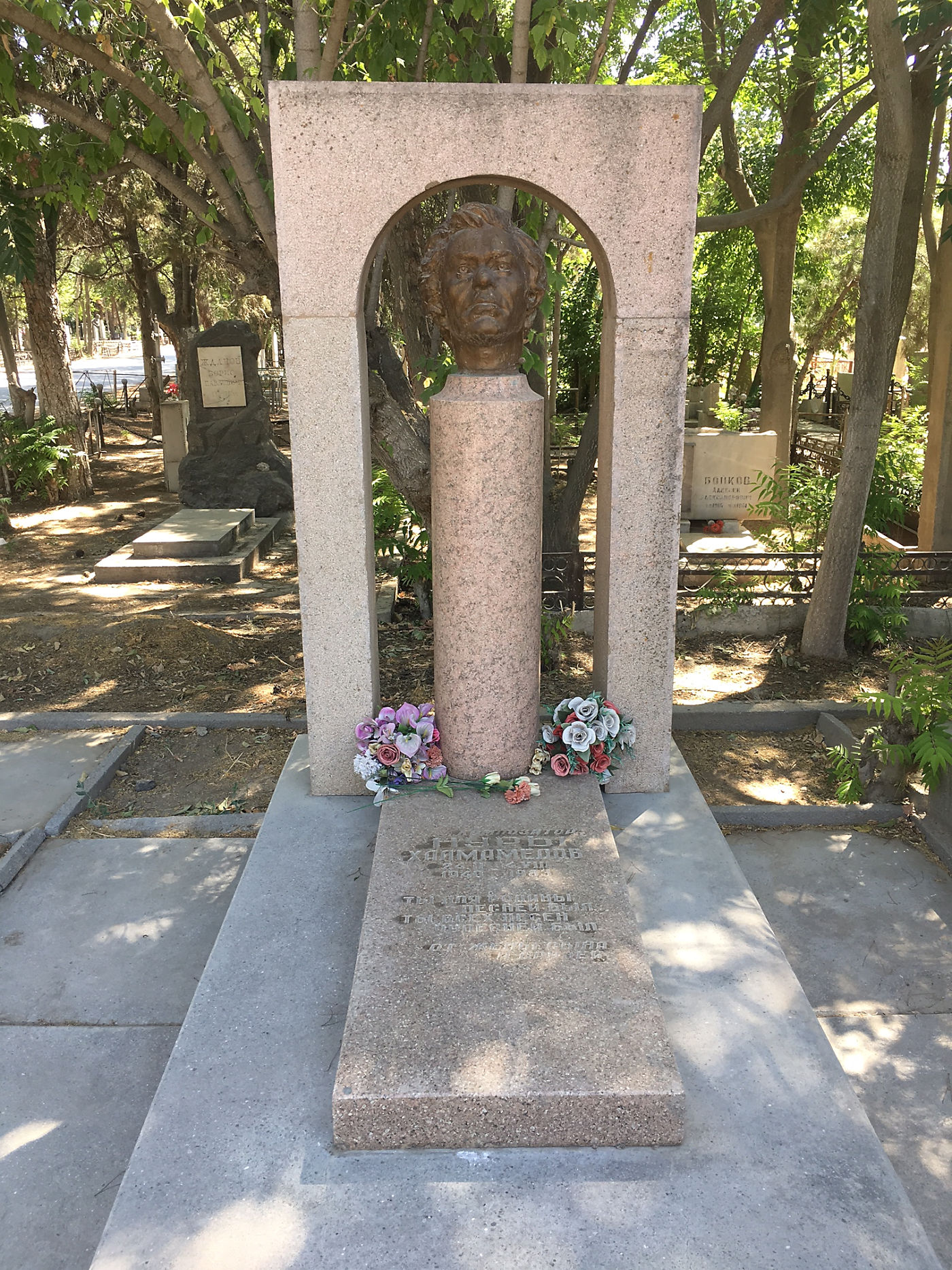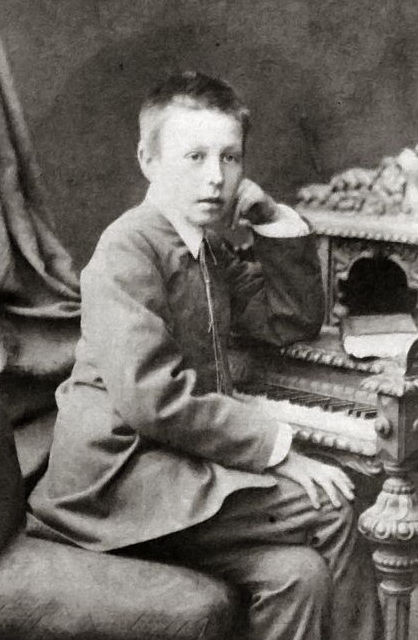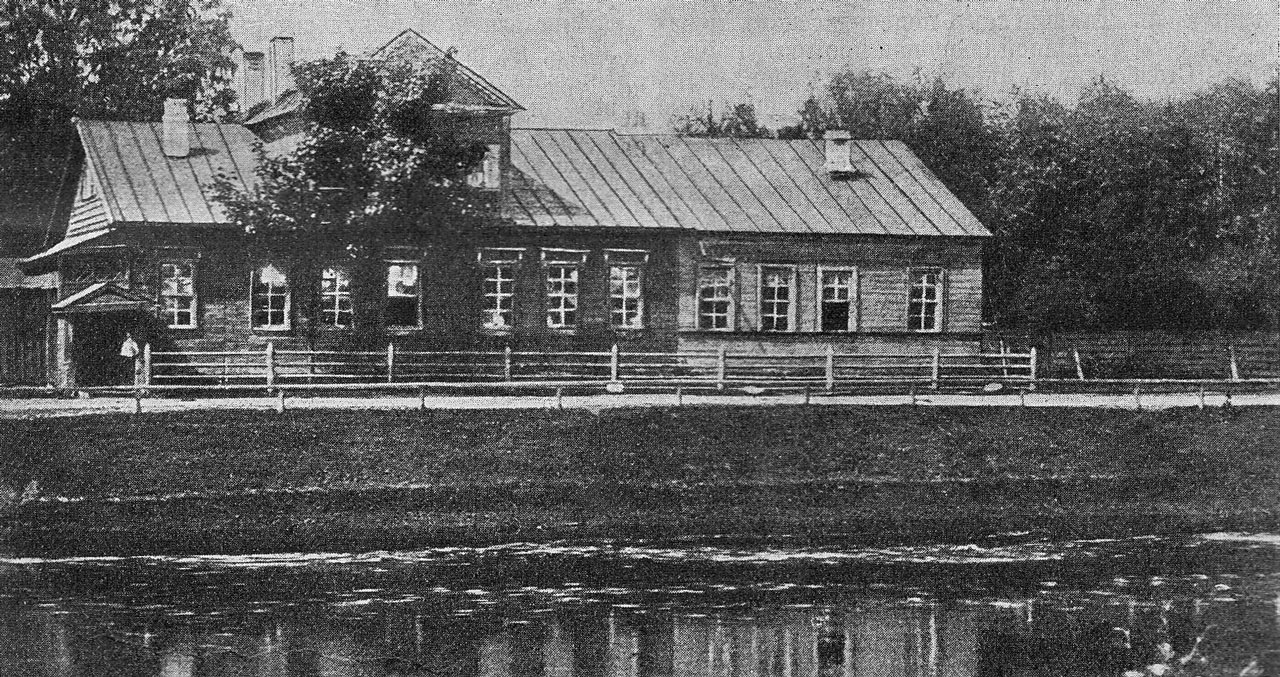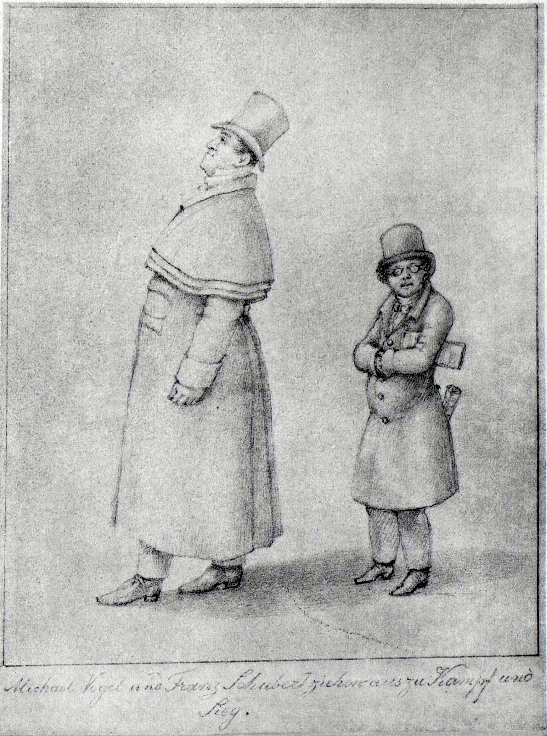|
Nury Halmammedov
Nurmammet Halmammedovich Halmammedov (; ; 20 June 1938– 4 August 1983), also known as Nury Halmammedov (; ) or Nury Halmammet (; ), was a prominent Turkmen composer described as one of Turkmenistan's "Greatest Sons". His legacy has been commemorated with anniversary events in Turkmenistan and Russia. Early childhood and education Halmammedov was born on 20 June 1938 in Daýna village near Bäherden, Turkmenistan, to Halmammet Bayliyev and Hangul-Eje Mammedaliyeva. He had a cat, which died protecting Nury from a snake when he was an infant. Nury never forgot about him. Nury had a very difficult childhood. According to Jemile Gurbanova's biography of Halmammedov, his mother died in 1944, and his father moved to Iran with two of the family's four sons, Begmammet and Ashyrberdi, abandoning Nury, his 17-year-old brother, Bayly, and older sister, Artyk. Nury's memories of this time were grim. He recounted at one point. : Since in my childhood I drank cloudy water from an irrigati ... [...More Info...] [...Related Items...] OR: [Wikipedia] [Google] [Baidu] |
Turkmen SSR
The Turkmen Soviet Socialist Republic, also known as Soviet Turkmenistan, the Turkmen SSR, TuSSR, Turkmenistan, or Turkmenia, was one of the Republics of the Soviet Union, constituent republics of the Soviet Union located in Soviet Central Asia, Central Asia existed as a republic from 1925 to 1991. Initially, on 7 August 1921, it was established as the Turkmen Oblast of the Turkestan ASSR before being made, on 13 May 1925, a separate republic of the USSR as the Turkmen SSR. Since then the borders of the Turkmenia were unchanged. On 22 August 1990, Turkmenia declared its sovereignty over Soviet laws. On 27 October 1991, it became Turkmenistan, independent as Turkmenistan. Geographically, Turkmenistan was bordered between Iran, Democratic Republic of Afghanistan, Afghanistan to the south, Caspian Sea to the west, the Kazakh Soviet Socialist Republic, Kazakh SSR to the north and the Uzbek Soviet Socialist Republic, Uzbek SSR to the east. History Annexation to Russia Russian Emp ... [...More Info...] [...Related Items...] OR: [Wikipedia] [Google] [Baidu] |
Melodiya
Melodiya () is a Russian record label. It was the state-owned major record company of the Soviet Union. History Melodiya was established in 1964 as the "All-Union Gramophone Record Firm of the USSR Ministry of Culture Melodiya" in accordance with a resolution issued by the Council of Ministers of the Soviet Union. It utilized numerous recording studios and manufacturing facilities throughout the USSR as well as powerful centres of distribution and promotional strategies. The best selling format at the time was 33⅓ and 78 rpm vinyl records. By 1973, Melodiya released some 1,200 gramophone records with a total circulation of 190-200 million per year, in addition to 1 million compact cassettes per year, was exporting its production to more than 70 countries.Great Soviet Encyclopedia, 3rd edition, volume 16, p. 54, Moscow, Sovetskaya Entsiklopediya publisher, 1974 The label's production was dominated by classical music, music by Soviet composers and musicians, per ... [...More Info...] [...Related Items...] OR: [Wikipedia] [Google] [Baidu] |
Sergei Rachmaninoff
Sergei Vasilyevich Rachmaninoff; in Russian pre-revolutionary script. (28 March 1943) was a Russian composer, virtuoso pianist, and Conducting, conductor. Rachmaninoff is widely considered one of the finest pianists of his day and, as a composer, one of the last great representatives of Romantic music, Romanticism in Russian classical music. Early influences of Pyotr Ilyich Tchaikovsky, Tchaikovsky, Nikolai Rimsky-Korsakov, Rimsky-Korsakov, and other Russian composers gave way to a thoroughly personal idiom notable for its song-like melody, melodicism, Music#Expression, expressiveness, dense Counterpoint, contrapuntal textures, and rich Orchestration, orchestral colours. The piano is featured prominently in Rachmaninoff's compositional output and he used his skills as a performer to fully explore the expressive and technical possibilities of the instrument. Born into a musical family, Rachmaninoff began learning the piano at the age of four. He studied piano and composition at ... [...More Info...] [...Related Items...] OR: [Wikipedia] [Google] [Baidu] |
Franz Liszt
Franz Liszt (22 October 1811 – 31 July 1886) was a Hungarian composer, virtuoso pianist, conductor and teacher of the Romantic music, Romantic period. With a diverse List of compositions by Franz Liszt, body of work spanning more than six decades, he is considered to be one of the most prolific and influential composers of his era, and his piano works continue to be widely performed and recorded. Liszt achieved success as a concert pianist from an early age, and received lessons from the esteemed musicians Carl Czerny and Antonio Salieri. He gained further renown for his performances during tours of Europe in the 1830s and 1840s, developing a reputation for technical brilliance as well as physical attractiveness. In a phenomenon dubbed "Lisztomania", he rose to a degree of stardom and popularity among the public not experienced by the virtuosos who preceded him. During this period and into his later life, Liszt was a friend, musical promoter and benefactor to many composer ... [...More Info...] [...Related Items...] OR: [Wikipedia] [Google] [Baidu] |
Robert Schumann
Robert Schumann (; ; 8 June 181029 July 1856) was a German composer, pianist, and music critic of the early Romantic music, Romantic era. He composed in all the main musical genres of the time, writing for solo piano, voice and piano, chamber music, chamber groups, orchestra, choir and the opera. His works typify the spirit of the Romantic era in German music. Schumann was born in Zwickau, Saxony, to an affluent middle-class family with no musical connections, and was initially unsure whether to pursue a career as a lawyer or to make a living as a pianist-composer. He studied law at the universities of Leipzig University, Leipzig and Heidelberg University, Heidelberg but his main interests were music and Romantic literature. From 1829 he was a student of the piano teacher Friedrich Wieck, but his hopes for a career as a virtuoso pianist were frustrated by a worsening problem with his right hand, and he concentrated on composition. His early works were mainly piano pieces, inclu ... [...More Info...] [...Related Items...] OR: [Wikipedia] [Google] [Baidu] |
Aram Khachaturian
Aram Ilyich Khachaturian (; 1 May 1978) was a Soviet Armenians, Armenian composer and conductor. He is considered one of the leading Music of the Soviet Union#Classical music of the Soviet Union, Soviet composers. Khachaturian was born and raised in Tbilisi (now the capital of Georgia (country), Georgia). He moved to Moscow in 1921 following the Sovietization of the Caucasus. Without prior music training, he enrolled in the Gnessin State Musical College, Gnessin Musical Institute, and subsequently studied at the Moscow Conservatory in the class of Nikolai Myaskovsky, among others. His first major work, the Piano Concerto (Khachaturian), Piano Concerto (1936), popularized his name within and outside the Soviet Union. It was followed by the Violin Concerto (Khachaturian), Violin Concerto (1940) and the Cello Concerto (Khachaturian), Cello Concerto (1946). His other significant compositions include the ''Masquerade (Khachaturian), Masquerade Suite'' (1941), the Anthem of the Armeni ... [...More Info...] [...Related Items...] OR: [Wikipedia] [Google] [Baidu] |
Nikolai Rimsky-Korsakov
Nikolai Andreyevich Rimsky-Korsakov. At the time, his name was spelled , which he romanized as Nicolas Rimsky-Korsakow; the BGN/PCGN transliteration of Russian is used for his name here; ALA-LC system: , ISO 9 system: .. (18 March 1844 – 21 June 1908) was a Russian composer, a member of the group of composers known as The Five. He was a master of orchestration. His best-known orchestral compositions—'' Capriccio Espagnol'', the '' Russian Easter Festival Overture'', and the symphonic suite '' Scheherazade''—are staples of the classical music repertoire, along with suites and excerpts from some of his fifteen operas. ''Scheherazade'' is an example of his frequent use of fairy-tale and folk subjects. Rimsky-Korsakov believed in developing a nationalistic style of classical music, as did his fellow composer Mily Balakirev and the critic Vladimir Stasov. This style employed Russian folk song and lore along with exotic harmonic, melodic and rhythmic elements in a ... [...More Info...] [...Related Items...] OR: [Wikipedia] [Google] [Baidu] |
Franz Schubert
Franz Peter Schubert (; ; 31 January 179719 November 1828) was an Austrian composer of the late Classical period (music), Classical and early Romantic music, Romantic eras. Despite his short life, Schubert left behind a List of compositions by Franz Schubert, vast ''oeuvre'', including more than 600 ''Lieder'' (art songs in German) and other vocal works, seven complete symphonies, sacred music, operas, incidental music, and a large body of piano and chamber music. His major works include "Erlkönig (Schubert), Erlkönig", "Gretchen am Spinnrade", and "Ave Maria (Schubert), Ave Maria"; the Trout Quintet, ''Trout'' Quintet; the Symphony No. 8 (Schubert), Symphony No. 8 in B minor (''Unfinished''); the Symphony No. 9 (Schubert), Symphony No. 9 in C major (''Great''); the String Quartet No. 14 (Schubert), String Quartet No. 14 in D minor (''Death and the Maiden''); the String Quintet (Schubert), String Quintet in C major; the Impromptus (Schubert), Impromptus for solo piano; the S ... [...More Info...] [...Related Items...] OR: [Wikipedia] [Google] [Baidu] |
Music Of Turkmenistan
The music of contemporary nomadic and rural Turkmen people is closely related other Central Asian folk forms and is descended from Arab and Persian forms of the Middle Ages. Important musical traditions in Turkmen music include traveling singers and shamans called '' bagshy'', who act as healers and magicians and sing either a cappella or accompanied by the dutar, a two-stringed lute. The Central Asian classical music tradition, mugam, is also present in Turkmenistan under the name mukamlar. Classical Turkmen folk music According to Soviet musicologist Viktor Belyayev, Turkmen classical folk music is directly descended from Arabic music as taught and performed in Khorezm, particularly in Bukhara, which was the musical center of the Islamic world in the 13th century. The Turkic tribes of Central Asia, including the predecessors of today's Turkmen, abandoned their own culture in the 9th century and shifted to Arab culture, including music, with their adoption of Islam.The Ar ... [...More Info...] [...Related Items...] OR: [Wikipedia] [Google] [Baidu] |
Epic Of Koroghlu
The ''Epic of Koroghlu'' (; ; ; ) is a heroic legend prominent in the oral traditions of the Turkic peoples, mainly the Oghuz Turks. The legend typically describes a hero who seeks to avenge a wrong. It was often put to music and played at sporting events as an inspiration to the competing athletes. Koroghlu is the main hero of an epic with the same name in Azerbaijani, Turkmen and Turkish as well as some other Turkic languages. The epic tells about the life and heroic deeds of Koroghlu as a hero of the people who struggled against unjust rulers. The epic combines the occasional romance with Robin Hood-like chivalry. Due to the migration in the Middle Ages of large groups of Oghuz Turks within Central Asia, South Caucasus and Asia Minor, and their subsequent assimilation with other ethnic groups, the Epic of Koroghlu spread widely in these geographical regions leading to emergence of its Turkmen, Kazakh, Uzbek, Tajik, Azerbaijani, Turkish, Crimean Tatar, Georgian, ... [...More Info...] [...Related Items...] OR: [Wikipedia] [Google] [Baidu] |
Heinrich Heine
Christian Johann Heinrich Heine (; ; born Harry Heine; 13 December 1797 – 17 February 1856) was an outstanding poet, writer, and literary criticism, literary critic of 19th-century German Romanticism. He is best known outside Germany for his early lyric poetry, which was set to music in the form of ''Lieder'' (art songs) by composers such as Robert Schumann and Franz Schubert. Heine's later verse and prose are distinguished by their satirical wit and irony. He is considered a member of the Young Germany movement. His radical political views led to many of his works being Censorship in Germany, banned by German authorities—which, however, only added to his fame. He spent the last 25 years of his life as an expatriate in Paris. Heine's early works, such as ''Letters from Berlin'' (1826) and ''Germany. A Winter's Tale'' (1828), gained widespread attention for their poetic expression, profound exploration of love, and satirical commentary on social phenomena. As a member of the ... [...More Info...] [...Related Items...] OR: [Wikipedia] [Google] [Baidu] |







